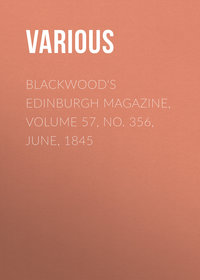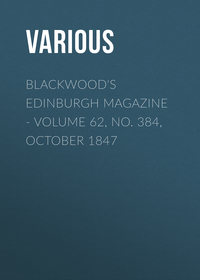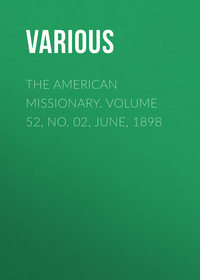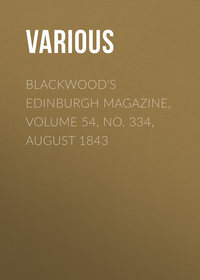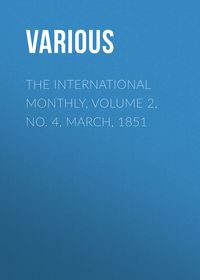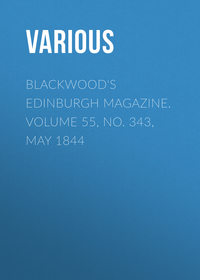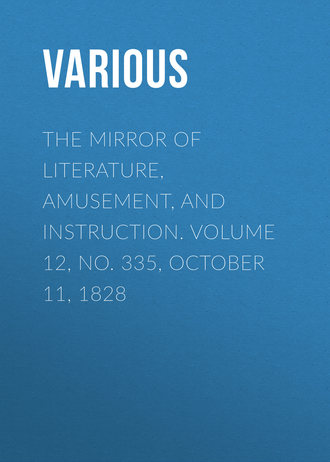 полная версия
полная версияThe Mirror of Literature, Amusement, and Instruction. Volume 12, No. 335, October 11, 1828

Various
The Mirror of Literature, Amusement, and Instruction / Volume 12, No. 335, October 11, 1828
LAVENHAM CHURCH
Lavenham, or Lanham, a small town north of Sudbury, was once eminent for its manufactures, when there were eight or nine cloth-halls in the place, inhabited by rich clothiers. The De Veres, Earls of Oxford, whose names are blazoned in our history, held the manor from the reign of Henry I. till that of Elizabeth, and one of the noble family obtained a charter from Edward III. authorizing his tenants at this place to pass toll-free throughout all England, which grant was confirmed by Elizabeth. But the manufacturing celebrity of Lavenham has dwindled to spinning woollen yarn, and making calimancoes and hempen cloth; the opulent clothiers have shuffled off their mortal coil, and proved that “the web of our life is of a mingled yarn, good and ill together.”
The church of Lavenham is, however, a venerable wreck of antiquity, and is accounted the most beautiful fabric of the kind in Suffolk. It is chiefly built of freestone, the rest being of curious flintwork; its total length is 150 feet, and its breadth 68. From concurrent antiquarian authorities we learn that the church was built by the De Veres, in conjunction with the Springs, wealthy clothiers at Lavenham. This is attested by the different quarterings of their respective arms on the building. The porch is an elegant piece of architecture, very highly enriched with the shields, garters, &c. of many of the most noble families in the kingdom, among which are the letters I.O., probably intended for the initials of John, the 14th Earl of Oxford, who married the daughter of Thomas Howard, Duke of Norfolk. He is conjectured to have erected this porch.
In the interior, the roof is admirably carved, and the pews belonging to the Earls of Oxford and the Springs, though now much decayed, were highly-finished pieces of Gothic work in wood. Some of the windows are still embellished with painted glass, representing the arms of the De Veres and others. Here also is a costly monument of alabaster and gold, erected to the memory of the Rev. Henry Copinger,1 rector of Lavenham, with alto-relievo figures of the reverend divine and his wife.
In the north aisle is a small mural monument, upon which are represented a man and woman, engraved on brass, kneeling before a table, and three sons and daughters behind them. From the mouth of the man proceeds a label, on which are these words:—In manus tuas dne commendo spiritum meum. Underneath is this inscription, which, like that of the label, is in the old English character:—
Contynuall prayse these lynes in brasse,Of Allaine Dister here,A clothier, vertuous while he wasIn Lavenham many a yeare.For as in lyefe he loved bestThe poore to clothe and feede,So with the rich and all the restHe neighbourlie agreed;And did appoynte before he dyed,A special yearlie rent,Which should be every WhitsontideAmong the poorest spent. Et obiit Anno Dni 1534.Although this benefaction is written in brass, the good man’s successors have found enough of the same metal to pervert it; for it is now lost, and no person can give any account of it. It needs not brass to outlive honesty; a mere breath will often destroy her. There are, however, several substantial charities belonging to Lavenham, the disposal of which has fallen into better hands.
In the churchyard is a very old gravestone, which formerly had a Saxon inscription. Kirby, in his account of the monasteries of Suffolk, says that here, on the tomb of one John Wiles, a bachelor, who died in 1694, is this odd jingling epitaph:—
Quod fuit esse quod est, quod non fuit esse quod esseEsse quod est non esse, quod est non erit esse.But as the point and oddity may not be directly evident to all, perhaps some of our readers will furnish us with a pithy translation for our next.
F.R. of Lavenham, to whom we are indebted for the drawing of Lavenham Church, informs us that this fine building will shortly undergo a thorough repair.
FIRE TOWERS AND BELFRIES
(To the Editor of the Mirror.)In No. 333 of the MIRROR, there is an article on the ancient round towers in Scotland and Ireland, in which it is stated that the said towers “have puzzled all antiquarians,” that they are now generally called fire towers and that “they certainly were not belfries.”
I have often thought that antiquarians, and particularly our modern Irish antiquarians, have affected to be puzzled about what, to the rest of mankind, must appear to be evident enough; and this for the purpose of making a parade of their learning, and of astonishing the common reader by the ingenuity of their speculations.
I think I shall be able to show, that a motive of this kind must have operated in the case of these round towers, otherwise “all the antiquarians” could not have been so sadly puzzled about what to the rest of the world appears a very plain matter.
The fact is, that when St. Patrick planted the Christian faith in Ireland, in the middle of the fifth century, (he died A.D. 492,) the practice of hanging bells in church steeples had not begun; and we know from history, that they were first used to summon the people to worship in A.D. 551, by a bishop of Campania; the churches, therefore, that were erected by St. Patrick, (and he built many,) were originally without belfries; and when the use of bells became common, it was judged more expedient to erect a belfry detached from the church, than by sticking it up against the side or end walls, to mar the proportions of the original building.
This is the account of the matter given by the old Irish historians, not one of whom appears to have been aware what “puzzlers” these round towers were to become in after ages; and in a life of St. Kevin, of Glendaloch, (co. Wicklow,) who died A.D. 628, we are told that “the holy bishop did,” a short time before his death, “erect a bell-house (cloig-theach) contiguous to the church formerly erected by him, in which he placed a bell, to the glory of God, and for the good of his own soul.”
I am not unaware, in giving you the above quotation, that “all the antiquarians,” and particularly those of Scotland, have long since decided, that in every matter connected with the ancient history of Ireland, her native historians (many of whom were eye-witnesses of the facts they relate) are on no account to be credited; and that the safest way of dealing with those chroniclers is, in every thing, to take for granted exactly the reverse of what they may at any time assert. In deference, therefore, to such high authorities, I shall waive any advantage which I might claim on account of a quotation from the works of a native historian, and proceed to show, from the reasonableness of the thing itself, that those towers which you state “were certainly never belfries,” were in fact belfries, and were never any thing else.
First.—They are all situated within a few yards of some ancient church, and which church is invariably without a steeple.
Secondly.—It is impossible to conceive, from their slender shape, their great height, and their contiguity to the church, for what other purpose they could have been intended, having, to a spectator inside, who looks up to the top, exactly the appearance of an enormous gun-barrel.
Thirdly.—That in all of them now entire, the holes, for the purpose of receiving the beam to support the bell, remain; and that in one at least, that upon Tory Island, co. Donegal, the beam itself may be seen at this day.
Fourthly, and which appears to me more conclusive than all the rest, that these towers, in every part of Ireland, are, to this day, called in Irish by the name of clogach, (cloig-theach,) that is, bell-house, and that they are never called (in Irish at least) by any other name whatever.
H.S.P.S. We have heard a good deal of late of a chimney or high tower erected at Bow, by the East London Water Company, on account of its having been erected without any outside scaffolding. It is remarkable, that the traditions of all the people in the neighbourhood of the round towers in Ireland, agree in stating that they were built in the same manner.
BELLE SAVAGE INN
(To the Editor of the Mirror.)Observing in the daily papers an extract from the MIRROR respecting the Belle Savage Inn, I copy you an advertisement out of the London Gazette for February, 1676, respecting that place, which appears to have been called “ancient” so long back as that period.
LEONARD WILSON.“An antient inn, called the Bell Savage Inn, situate on Ludgate Hill, London, consisting of about 40 rooms, with good cellarage, stabling for 100 horses, and other good accommodations, is to be lett at a yearly rent, or the lease sold, with or without the goods in the house. Enquire at the said inn, or of Mr. Francis Griffith, a scrivener, in Newgate-street, near Newgate, and you may be fully informed.”
THE FLOWER AND THE OAK.
IMITATED FROM THE ITALIAN
(For the Mirror.)A flower beheld a lofty oak,And thus in mournful accents spoke;“The verdure of that tree will last,Till Autumn’s loveliest days are past,Whilst I with brightest colours crown’d,Shall soon lie withering on the ground.”The lofty oak this answer made:“The fairest flowers the soonest fade.”FROM ZAPPI
Cries Phillis to her shepherd swain,“Why is Love painted without eyes?”The youth from flattery can’t refrain,And to the fair one quick replies:“Those lovely eyes which now are thine,In young Love’s face were wont to shine.”ANNA.CROMLEHS
(To the Editor of the Mirror.)In No. 328 you have given an account of a cromleh in Anglesea. Perhaps it may not be amiss to inform you that the word cromlech, or cromleh, is derived from the Welsh words crom, feminine of crwm, crooked, and lech, a flat stone. There are some cromlehs in Carmarthenshire and Pembrokeshire, which are supposed to have been altars for sacrifices before the Christian era.
W.H.THE ALPINE HORN
(For the Mirror.)The Alpine Horn is an instrument made of the bark of the cherry-tree, and like a speaking-trumpet, is used to convey sounds to a great distance. When the last rays of the sun gild the summit of the Alps, the shepherd who inhabits the highest peak of those mountains, takes his horn, and cries with a loud voice, “Praised be the Lord.” As soon as the neighbouring shepherds hear him they leave their huts and repeat these words. The sounds are prolonged many minutes, while the echoes of the mountains, and grottoes of the rocks, repeat the name of God. Imagination cannot picture any thing more solemn, or sublime, than this scene. During the silence that succeeds, the shepherds bend their knees, and pray in the open air, and then retire to their huts to rest. The sun-light gilding the tops of those stupendous mountains, upon which the blue vault of heaven seems to rest, the magnificent scenery around, and the voices of the shepherds sounding from rock to rock the praise of the Almighty, must fill the mind of every traveller with enthusiasm and awe.
INA.SPIRIT OF DISCOVERY
ENGLISH GARDENING
Mr. Corbett has just published a useful little volume, entitled the English Gardener, which is, perhaps, one of the most practical books ever printed. At present we must confine our extracts to a few useful passages; but we purpose a more extended notice of this very interesting volume.
Laying out GardensIn the work of laying-out, great care ought to be taken with regard to straightness and distances, and particularly as to the squareness of every part. To make lines perpendicular, and perfectly so, is, indeed, no difficult matter when one knows how to do it; but one must know how to do it, before one can do it at all. If the gardener understand this much of geometry, he will do it without any difficulty; but if he only pretend to understand the matter, and begin to walk backward and forward, stretching out lines and cocking his eye, make no bones with him; send for a bricklayer, and see the stumps driven into the ground yourself. The four outside lines being laid down with perfect truth, it must be a bungling fellow indeed that cannot do the rest; but if they be only a little askew, you have a botch in your eye for the rest of your life, and a botch of your own making too. Gardeners seldom want for confidence in their own abilities; but this affair of raising perpendiculars upon a given line is a thing settled in a moment: you have nothing to do but to say to the gardener, “Come, let us see how you do it.” He has but one way in which he can do it; and, if he do not immediately begin to work in that way, pack him off to get a bricklayer, even a botch in which trade will perform the work to the truth of a hair.
SeedsI incline to the opinion, that we should try seeds as our ancestors tried witches; not by fire, but by water; and that, following up their practice, we should reprobate and destroy all that do not readily sink.
MelonsIt is a received opinion, a thing taken for granted, an axiom in horticulture, that melon seed is the better for being old. Mr. Marshall says, that it ought to be “about four years old, though some prefer it much older.” And he afterwards observes, that “if new seed only can be had, it should be carried a week or two in the breeches-pocket, to dry away some of the more watery particles!” If age be a recommendation in rules as well as in melon-seed, this rule has it; for English authors published it, and French authors laughed at it, more than a century past!
Those who can afford to have melons raised in their gardens, can afford to keep a conjuror to raise them; and a conjuror will hardly condescend to follow common sense in his practice. This would be lowering the profession in the eyes of the vulgar, and, which would be very dangerous, in the eyes of his employer. However, a great deal of this stuff is traditionary; and how are we to find the conscience to blame a gardener for errors inculcated by gentlemen of erudition!
Sowing SeedsI do hope that it is unnecessary for me to say, that sowing according to the moon is wholly absurd and ridiculous; and that it arose solely out of the circumstance, that our forefathers, who could not read, had neither almanack nor calendar to guide them, and who counted by moons and festivals, instead of by months, and days of months.
Brussels SproutsIt is, most likely, owing to negligence that we hardly ever see such a thing as real Brussels sprouts in England; and it is said that it is pretty nearly the same in France, the proper care being taken nowhere, apparently, but in the neighbourhood of Brussels.
Horse-RadishAfter horse-radish has borne seed once or twice, its root becomes hard, brown on the outside, not juicy when it is scraped, and eats more like little chips than like a garden vegetable; so that, at taverns and eating-houses, there frequently seems to be a rivalship on the point of toughness between the horse-radish and the beef-steak; and it would be well if this inconvenient rivalship never discovered itself any where else.
Eating MushroomsI once ate about three spoonsful at table at Mr. Timothy Brown’s, at Peckham, which had been cooked, I suppose, in the usual way; but I had not long eaten them before my whole body, face, hands, and all, was covered with red spots or pimples, and to such a degree, and coming on so fast, that the doctor who attended the family was sent for. He thought nothing of it, gave me a little draught of some sort, and the pimples went away; but I attributed it then to the mushrooms. The next year, I had mushrooms in my own garden at Botley, and I determined to try the experiment whether they would have the same effect again; but, not liking to run any risk, I took only a teaspoonful, or, rather, a French coffee-spoonful, which is larger than a common teaspoon. They had just the same effect, both as to sensation and outward appearance! From that day to this, I have never touched mushrooms, for I conclude that there must be something poisonous in that which will so quickly produce the effects that I have described, and on a healthy and hale body like mine; and, therefore, I do not advise any one to cultivate these things.
PeasThe late king, George the Third, reigned so long, that his birthday formed a sort of season with gardeners; and, ever since I became a man, I can recollect that it was always deemed rather a sign of bad gardening if there were not green peas in the garden fit to gather on the fourth of June. It is curious that green peas are to be had as early in Long Island, and in the seaboard part of the state of New Jersey, as in England, though not sowed there, observe, until very late in April, while ours, to be very early, must be sowed in the month of December or January. It is still more curious, that, such is the effect of habit and tradition, that, even when I was last in America (1819), people talked just as familiarly as in England about having green peas on the king’s birth-day, and were just as ambitious for accomplishing the object; and I remember a gentleman who had been a republican officer during the revolutionary war, who told me that he always got in his garden green peas fit to eat on old Uncle George’s birth-day.
CiderMr. Platt had a curious mode of making strong cider in America. In the month of January or February, he placed a number of hogsheads of cider upon stands out of doors. The frost turned to ice the upper part of the contents of the hogshead, and a tap drew off from the bottom the part which was not frozen. This was the spirituous part, and was as strong as the very strongest of beer that can be made. The frost had no power over this part; but the lighter part which was at the top it froze into ice. This, when thawed, was weak cider. This method of getting strong cider would not do in a country like this, where the frosts are never sufficiently severe.
Keeping ApplesWhen there is frost, all that you have to do, is to keep the apples in a state of total darkness until some days after a complete thaw has come. In America they are frequently frozen as hard as stones; if they thaw in the light, they rot; but if they thaw in darkness, they not only do not rot, but lose very little of their original flavour. This may be new to the English reader; but he may depend upon it that the statement is correct.
To Keep ChestnutsTo preserve chestnuts, so as to have them to sow in the spring, or to eat through the winter, you must make them perfectly dry after they come out of their green husk; then put them into a box or a barrel mixed with, and covered over by, fine and dry sand, three gallons of sand to one gallon of chestnuts. If there be maggots in any of the chestnuts, they will come out of the chestnuts and work up through the sand to get to the air; and thus you have your chestnuts sweet and sound and fresh.
PlumsThe Magnum Bonums are fit for nothing but tarts and sweetmeats. Magnum is right enough; but as to bonum, the word has seldom been so completely misapplied.
British WinesThat which we call currant wine, is neither more nor less than red-looking, weak rum, the strength coming from the sugar; and gooseberry wine is a thing of the same character, and, if the fruit were of no other use than this, one might wish them to be extirpated. People deceive themselves. The thing is called wine, but it is rum; that is to say, an extract from sugar.
BirdsThe wild pigeons in America live, for about a month, entirely upon the buds of the sugar-maple, and are killed by hundreds of thousands, by persons who erect bough-houses, and remain in a maple wood with guns and powder and shot for that purpose. If we open the craw of one of these little birds, we find in it green stuff of various descriptions, and, generally, more or less of grass, and, therefore, it is a little too much to believe, that, in taking away our buds, they merely relieve us from the insects that would, in time, eat us up. Birds are exceedingly cunning in their generation; but, luckily for us gardeners, they do not know how to distinguish between the report of a gun loaded with powder and shot, and one that is only loaded with powder. Very frequent firing with powder will alarm them so that they will quit the spot, or, at least, be so timid as to become comparatively little mischievous.
SPIRIT OF THE PUBLIC JOURNALS
THE DANDY TRAVELLER
There is a class of travelling oddities—the dandy voyageurs of Britain, who, teeming with the proud consciousness of their excellence in comparison with the rest of human kind, swoln with self-sufficiency, float like empty bubbles on the water’s surface, and who seem as if they would break and be dissolved by contact with a vulgar touch. They contrive to swim by means of their air-blown vanity until they come into concussion with some material object, and are at once reduced to their proper level, and for ever annihilated. Their country is London; their domicile Regent-street; thence they would never travel, had they their wills,—not but they would like to see Paris, and move at Longschamps, or admire its beauties in an equipage à D’Aumont; but the horrors attendant upon such an enterprise are too formidable gratuitously to be encountered. It is only when a dip at the Fishmonger’s has been rather too often tried, or Stultz’s billets-doux have been repeated with increasing ardour on the part of the Tailor-lover until he delegates the maintenance of his baronial purse to some dandy-detesting attorney, that they feel it expedient to brave the dangers of sea and land, and, unscrewing their brass spurs, folding up their mustachios in a port-feuille, they hasten them from life and love, and London, and set them down at Meurice’s, the creatures of another element; not less new to all things around them, than all things there are new to them. It was not long since I met one at the table-d’hote of Mr. Money, the hospitable but expensive owner of Les Trois Couronnes, at Vevay, in Switzerland. A large party had assembled, composed of almost every European nation; and we had just commenced our dinner, when we were intruded upon by an Exquisite—a creature something between the human species and a man-milliner—a seven months’ child of fashion—one who had been left an orphan by manliness and taste, and no longer remembered his lost parents. Never can I forget the stare of Baron Pougens, (a Swiss by birth, but a Russian noble) as this specimen of elegance, with mincing step and gait, moved onward, something like a new member tripping it to the table to take his oaths. How he had got so far from Grange’s, I really cannot say; but he had the policy of assurance in his favour; and in his own idea, at the least, was what I heard a poor devil of a candle-snuffer once denominate George Frederic Cooke, the tragedian,—“a rare specimen of exalted humanity;” and the actor was certainly in a rare spirit of exaltation at the moment. His delicate frame was enveloped by a dandy harness, so admirably ordered and adjusted, that he moved in fear of involving his Stultz in the danger of a plait; his kid-clad fingers scarcely supported the weight of his yellow-lined Leghorn; all that was man about him, was in his spurs and mustachios; and, even with them, he seemed there a moth exposed to an Alpine blast,—some mamma’s darling, injudiciously and cruelly abandoned to the risk of cold, in a land where Savory and Moore were yet unheard of, “Beppo in London” wholly unknown, Hoby unesteemed, Gunter misprized, and where George Brummell had never, never trod. After having bestowed a wild inexpressive stare at the cannibals assembled, male and female,—depositing his Vyse, running his digits through his perfumed hair, raising his shirt-collar so as to form an angle of forty-five with his purple Gros de Naples cravat, and applying his gold-turned snuff-box to his nose, Money (who has lived long in England, and speaks its language well) ventured to address him, by demanding if he should place a cover for him. “Sar!—your—appellation—if—you please?” the drawling and affected response of the fop. “Money, Sir.” “the sign of the place—the thing—the auberge?” “The Three Crowns, Sir.” “Money of the country, I presume!—Good—stop—put that down—Mem:” and he took his tablets from his pocket. “Money—Three Crowns—Capital that—will do for Dibdin,—if not, give it Theodore Hook. And the name of your—your town, my man?” “Vevay, Sir!” “And that liquid concern I see from the windar?” “The Lake, Sir—the Lake of Geneva.” “Good gracious! all Geneva?” “Otherwise termed the Leman, Sir.” “Lemon! ha! a sort of gin-punch, I presume—acidulated blue-ruin—Vastly vulgar, by Petersham—only fit for the Cider-cellar, Three Crowns—And that—that—white thing there on the other side of the punch-bowl, Money?” “That is Gin-goulph, Sir.” “Gin-gulp! appropriate certainly, but de-ci-ded-ly—low.” “Will you please, Sir, to dine? dinner is on the table.” “Dinnar! Crockford, be good to us!—Why—why—it is scarcely more than noon, Crowns.—What would Lady Diana say?—But true! I rose at eight—so, I think, I will patronize you, my good fellar—Long journey that from Lowsan—queer name for a place so high;—Vastly bad country this of yours, Crowns.—What are all those stunted poles, like cerceau sticks, placed in the ground? What do you cultivate, Crowns?” “The vine, Sir.” “Wine! wine! dear me! never knew wine grew before. In England it is a manufactory. One moment—pardon—Mem:—Wine grows in—in—” “The Canton de Vaud, Sir.” “In the Canton de Vo,—Tell that to Carbonel and Charles Wright when I go back. Is it Port, pray?” “No, Sir, a thin white wine.” “Thin—white —wine—runs up sticks in said Vo.” “Will you permit me to help you, Sir?” demanded Money, rather impatiently. “What have you, may I ask?” “Bouilli, Sir.” “Bull, what? have you no other beef?—Mem: people living near punch-bowl eat bull beef,” “There is a very nice culotte, Sir, if you prefer it.” “Cu—what, Three Crowns? Culotte!—why, in France, that is—is—inexpressibles—Mem: eat inexpressibles roasted—Breaches of taste, by Reay—the savages!—that will do for the Bedford—mention it to Joy—the brutes!—Neither bull nor breeches, thank you inexpressibly, Money.” “A Blanquette de Veau, then, if you like, Sir.” “Blanket de Vo! a cover to lay, indeed, Crowns. Mem: inhabitants of Gin stew blankets of the country, and then eat them—the Alsatians!” “Poultry, Sir, if you desire it.” “Ah! some hopes there, Money—What is that you hold?” “A Poularde, Sir.” “Obliged, Crowns—no Pull-hard thank you, devilish tough I doubt—Mem: fowl called Pull-hard at Gin—Try again, my man.” “A Dindon and dans son jus, Sir.” “Ding dong and a dancing Jew!—sort of stewed Rothschild, I suppose—Well! if I don’t mean exactly to starve, I fear I must even venture on the Jew.—Not bad, by Long—Mem: Dancing Jews in sauce capital—mention that to young G–, of the Tenth.” The business of mastication arrested for a moment the sapient remarks of the Impayable, until our notice was again attracted by his leaping from his chair, and cutting divers capers around the room, which, if they did honour to his agility, harmonized but ill with the precisian starchness of his habiliments, the order whereof was grievously derangé by his antics.—“Water! water! Crowns.—I have emptied the vinegar cruet by mistake—Oh Lud! can scarcely breathe—Water! Crowns, water! in mercy.” “It was the Vin du Pays, I assure you, Sir,—nothing else upon my word.” “Water! water! oh—here—here I have it.” “No, Sir; I beg—that is Eau de Cerises—Kirschen-wasser—Cherry water.”—“Any—any water will do,”—and, ere Money could arrest his hand, the water-sembling but fiery fluid, the ardent spirit of the cherry, had been swallowed at a draught. He gaped and gasped for breath—he groaned and writhed in torment—and, borne out in the arms of Crowns and his men, the spirit-stirring Dandy was removed to bed, whence he arose to return, without delay, to London by the shortest possible road, even with the fear of another fieri facias before his eyes, to descant on vinous acidities, Gin Lakes, and the liver-consuming Spa of Vo.—New Monthly Mag.




